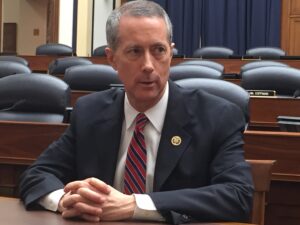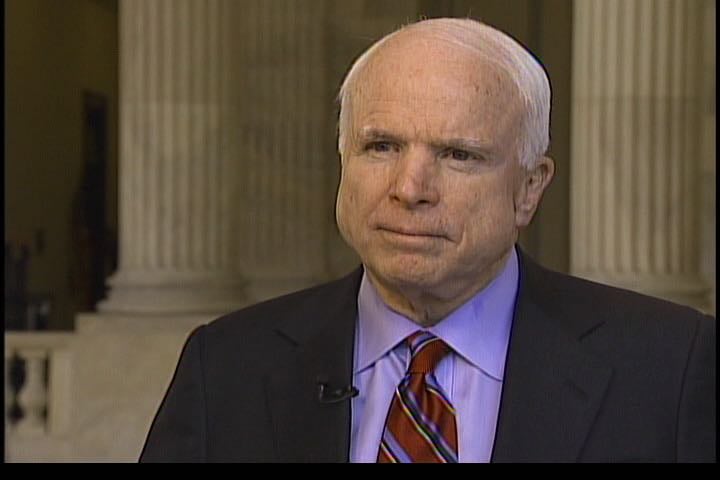McCain Launches Goldwater-Nichols Review; How Far Will He Go?
Posted on
UPDATED: With Thornberry Comment Supporting Reform
WASHINGTON: Sen. John McCain plans a long-term review of the law underpinning the modern American military, the Goldwater-Nichols legislation that created the current chain of command from president to defense secretary to combatant commanders.
“The Committee will be conducting a preliminary examination of the structure, roles, and missions of civilian and military organizations within the (Defense) Department. That will set the stage for a broader review of these issues starting after this year’s NDAA (National Defense Authorization Act) and extending into next year, many of which are tied directly to Goldwater-Nichols Act,” a congressional staff member wrote in an email after McCain spoke this morning at the Center for Strategic and International Studies.
The staffer responded to an email I sent after McCain hinted at the review during his speech.
Here’s what the chairman said at CSIS:
“At the same time, three decades later, there are real questions about how Goldwater-Nichols has been implemented and what unintended consequences may have resulted. For example:
- “Are the roles and missions of the Joint Staff, Combatant Commands, Joint Task Forces, and other headquarters elements properly aligned to conduct strategic planning, equip our warfighters, and maximize combat power?
- “Does the vast enterprise that has become the Office of the Secretary of Defense further our ability to meet present and future military challenges?
- “Does the constant churn of uniformed officers through joint assignments make them more effective military leaders, or has this exercise become more of a self-justification for a large officer corps?
- “Is the Defense Officer Personnel Management Act of 1980 still appropriate for the joint force of 2015 and beyond, or is it time to review this law?
“I could go on. I want the Senate Armed Services Committee to conduct real oversight of questions like these during the next two years. It is long overdue, and I think the 30th anniversary of Goldwater-Nichols is a fitting time to start.”
During the latter half of the 1990s a regular topic of debate was how to reform Goldwater-Nichols, especially to increase the efficiency and efficacy of joint forces. For a while, there was serious discussion about creating truly joint forces that eventually resulted in the doomed Joint Forces Command.
 Rep. Mac Thornberry, now chairman of the House Armed Services Committee, played a key role in that debate and kept his commitment to Joint Forces Command, taking an active role in its Transformation Advisory Group until the command was scrapped by former Defense Secretary Robert Gates.
Rep. Mac Thornberry, now chairman of the House Armed Services Committee, played a key role in that debate and kept his commitment to Joint Forces Command, taking an active role in its Transformation Advisory Group until the command was scrapped by former Defense Secretary Robert Gates.
UPDATE “Chairman Thornberry agrees that it is a healthy thing to take a look at the Goldwater-Nichols reforms 30 years after their implementation,” Claude Chafin, spokesman for the House Armed Services Committee said in an email. “At the HASC much of that effort will be rolled into the larger DoD reform efforts he spoke of earlier this week.”
Note McCain’s first focus is “roles and missions of the Joint Staff, Combatant Commands, Joint Task Forces” etc.
The Goldwater-Nichols review will be conducted in a manner akin to the one on acquisition launched by Thornberry: slow first steps, followed by bolder moves.
Given the extraordinary range of threats faced by the United States and the increasing need for integration of acquisition, command and training, everyone who cares about defense will be watching this closely. The Office of Secretary of Defense (OSD) and the four services will be watching especially closely, since it is their authorities and organizations that are most likely to be rejiggered, shifted or stripped.
If you’re out of date on your reading about Goldwater-Nichols and jointness, click here for a useful reading list compiled by the Army War College.
Subscribe to our newsletter
Promotions, new products and sales. Directly to your inbox.

